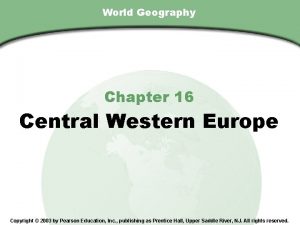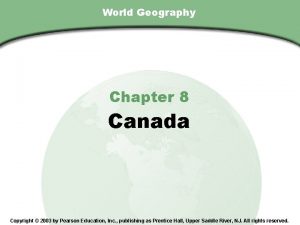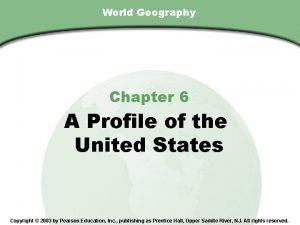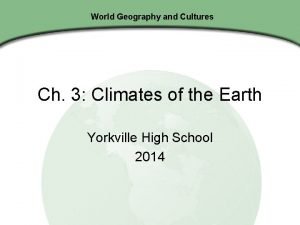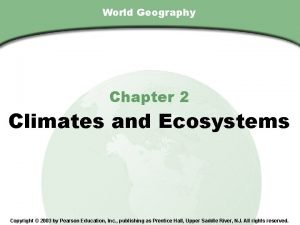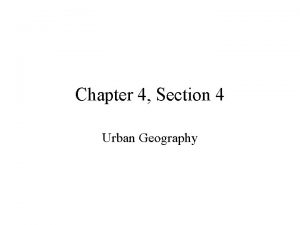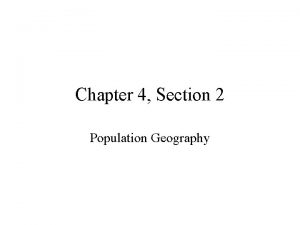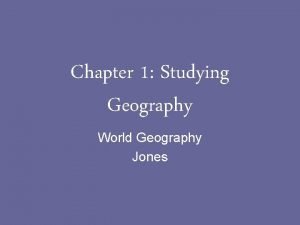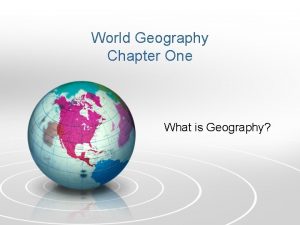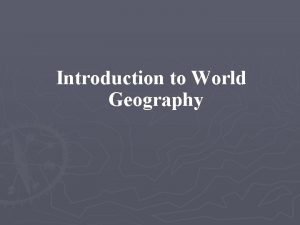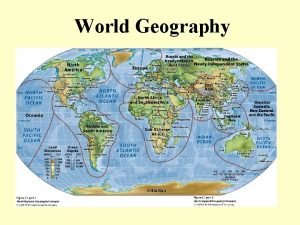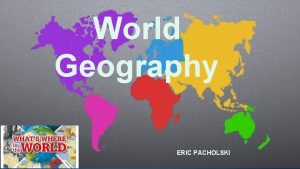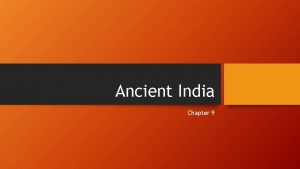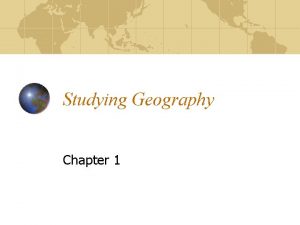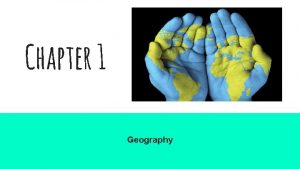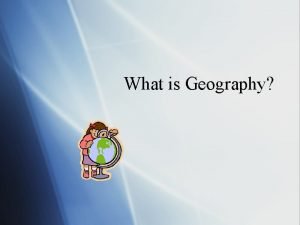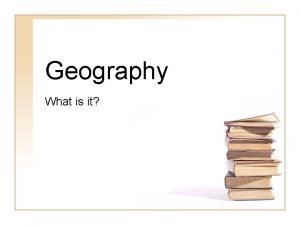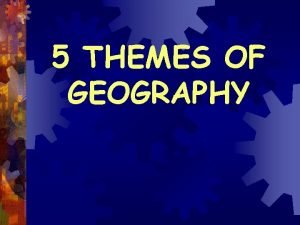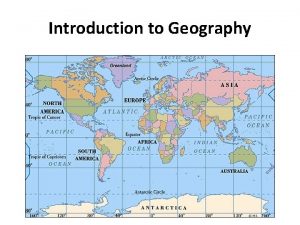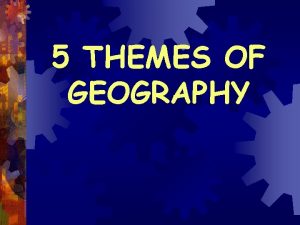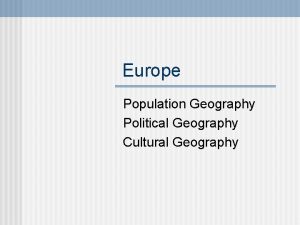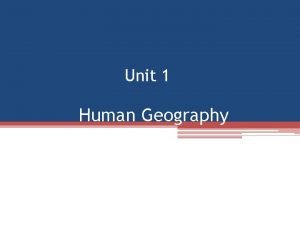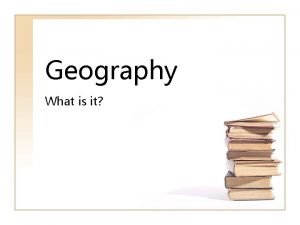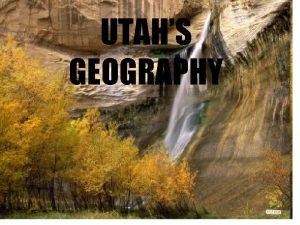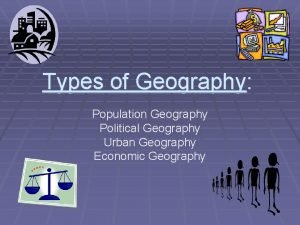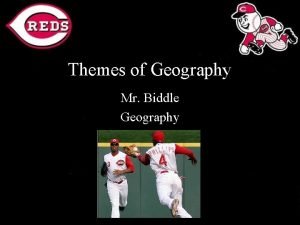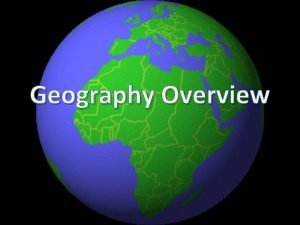Chapter 15 Section World Geography Chapter 15 The



























- Slides: 27

Chapter 15, Section World Geography Chapter 15 The British Isles and Nordic Nations Copyright © 2003 by Pearson Education, Inc. , publishing as Prentice Hall, Upper Saddle River, NJ. All rights reserved.

Chapter 15, Section World Geography Chapter 15: The British Isles and Nordic Nations Section 1: England Section 2: Scotland Wales Section 3: The Two Irelands Section 4: The Nordic Nations Copyright © 2003 by Pearson Education, Inc. , publishing as Prentice Hall, Upper Saddle River, NJ. All rights reserved.

Chapter 15, Section 1 England • What major physical characteristics can be found in different regions of England, and how do they affect the economy? • Why did London become one of the greatest commercial and shipping centers in the world? • How did the Industrial Revolution change and expand economic activities in the United Kingdom?

Chapter 15, Section 1 England’s Physical Characteristics

Chapter 15, Section 1 England’s Physical Characteristics England is divided into three different areas: the Highlands, Midlands, and Lowlands. • • • The Highlands along the west coast are rocky and rise up to 3, 000 feet, making the land difficult to farm. The Midlands are to the southeast, and the thick veins of coal that were there fueled England’s Industrial Revolution, which built up the population density in the area. In the south and east are the Lowlands, which have fertile soil that produces abundant crops.

Chapter 15, Section 1 Rise of London as a Trade Center • London lies only 70 miles (110 km) from the continent of Europe. • London is located on the Thames River estuary. • By the 1500 s, London had become a bustling sea port. • In the late 1400 s, improvements in ships and navigational devices allowed Europeans to cross the Atlantic Ocean. • Britain has a strategic, central location for Atlantic trade, and as trade across the Atlantic increased, Britain’s relative location improved.

Chapter 15, Section 1 Economic Activities • • • In the 1500 s, Britain shipped mostly agricultural products. Some of the earliest technological advances of the Industrial Revolution were used in the textile industry, using first water and then coal to power machines. Britain possessed large amounts of coal and iron ore, or rocky material containing a valuable mineral. The Industrial Revolution brought wealth, but it also changed the English landscape. Much of the region’s coal supply has been used up, and since the 1970 s Britain began using oil and natural gas taken from under the North Sea as sources of fuel. To offset the loss of heavy industry, the government has fostered the growth of tertiary economic activities such as finance and tourism.

Chapter 15, Section 1 Review In which region are most English coal deposits found? a) Highlands b) Midlands c) Lowlands d) Uplands To what sort of economic activities has Britain turned in recent years? a) farming and herding b) heavy manufacturing c) finance, insurance, and tourism d) information processing and research Want to connect to the World Geography link for this section? Click Here!

Chapter 15, Section 1 Review In which region are most English coal deposits found? a) Highlands b) Midlands c) Lowlands d) Uplands To what sort of economic activities has Britain turned in recent years? a) farming and herding b) heavy manufacturing c) finance, insurance, and tourism d) information processing and research Want to connect to the World Geography link for this section? Click Here!

Chapter 15, Section 2 Scotland Wales • What are the major physical characteristics of Scotland? • How have Scotland Wales prevented their cultural identities from being completely replaced by English culture? • How have technological changes affected economic activities in Wales?

Chapter 15, Section 2 Scotland’s Physical Characteristics The Highlands • The Highlands region is a large, high plateau with many lochs, or lakes. • Moors, or broad, treeless rolling plains, cover much of the Highlands and are dotted with bogs, areas of wet, spongy ground. • The Highlands are well suited to fishing and sheep herding. The Central Lowlands • The long Central Lowlands region, stretching from Edinburgh to Glasgow, is home to 75 percent of Scotland’s people. • Glasgow was a huge shipbuilding center in the 1800 s and early 1900 s. • Heavy industry in the Lowlands hit hard times in the mid-1900 s. The Southern Uplands • The Southern Uplands is primarily a sheep-raising region, and it is near the English border. • The Cheviot Hills give way to rolling plateaus that have been worn down by glaciers.

Chapter 15, Section 2 Scottish Culture • • • New industries are slowly taking the place of mining, steel making, and shipbuilding. Oil extraction in the North Sea has helped the economies of some cities. Computer and electronics businesses developed along the Tweed and Clyde rivers have given the Clyde Valley the nickname “Silicon Glen. ” Scotland England have been politically united, but Scotland has retained its own culture. English and Scottish parliaments were united by the Act of Union in 1707, but Scotland retained many trading and political rights. In 1997, Scottish voters approved the creation of a new Scottish parliament, and some Scots want Scotland to become independent.

Chapter 15, Section 2 Wales • Wales possesses a distinct culture, but it has been strongly influenced since being conquered by England in 1284. • The landscape of Wales is similar to that of Scotland, and it receives more rain than England. • About 20 percent of the Welsh population speaks Welsh as their first language, and Welsh patriots have won the right to broadcast television programs entirely in Welsh. • Industry and coal mining have changed the landscape and economy of southern Wales, but by the 1980 s most of the coal mines had closed. • In the 1990 s, high-tech industries provided new jobs in Wales.

Chapter 15, Section 2 Review In the 1800 s, Glasgow was the center of which industry? a) textile manufacturing b) steel making c) shipbuilding d) trade and finance In Wales, high-tech industries helped economic growth after the closure of a) coal mines b) hydroelectric plants c) shipyards d) television studios Want to connect to the World Geography link for this section? Click Here!

Chapter 15, Section 2 Review In the 1800 s, Glasgow was the center of which industry? a) textile manufacturing b) steel making c) shipbuilding d) trade and finance In Wales, high-tech industries helped economic growth after the closure of a) coal mines b) hydroelectric plants c) shipyards d) television studios Want to connect to the World Geography link for this section? Click Here!

Chapter 15, Section 3 The Two Irelands • How would you describe Ireland’s physical characteristics? • What geographic processes caused cooperation and conflict in Ireland? • What initiatives has the Republic of Ireland pursued in order to encourage economic activity?

Chapter 15, Section 3 Ireland’s Physical Characteristics • Ireland is shaped like a huge bowl, with hills ringing most of the coastline. • Ireland’s moist climate keeps vegetation a brilliant green, making its nickname “The Emerald Isle. ” • About one sixth of the island is covered by peat, a spongy material containing waterlogged mosses and plants that can be used as fuel. • The Republic of Ireland has recently developed a method of using peat in power plants, which now produce almost one quarter of the nation’s electricity.

Chapter 15, Section 3 Cooperation and Conflict Ireland’s history has been shaped by invasions and wars. Religious Conflicts • In the early 1500 s, Protestants broke from the Catholic Church in the Reformation. • The Protestant minority controlled much of the wealth, and Irish Catholics were poor. • Conflict between Irish Protestants and Irish Catholics led to cultural divergence, or deliberate efforts to keep the cultures separate. • Many poor Irish died in the Potato Famine of the 1840 s, inflaming anti-British feelings and causing many Irish to emigrate. Government and Citizenship • Irish rebellions in 1916 and 1921 led to free status under British supervision, with the exception of six counties in the northeast that remained part of the U. K. • The free state declared total independence in 1949 as the Republic of Ireland. • Catholics in Northern Ireland favor reunification, while Protestants oppose it. • Protestant and Catholic extremists in Northern Ireland have used violence to try to win control of Northern Ireland.

Chapter 15, Section 3 Economic Activities • In the 1990 s, the Republic of Ireland invested in education and modern telecommunications. • Foreign high-tech companies were persuaded to locate administrative offices in Ireland. • Irish economic growth became the highest in Europe in the late 1990 s, and per capita income increased dramatically as unemployment fell. • The new economic climate pulled immigrants to Ireland lured back many emigrants in the United States. • After Ireland adopted the Euro in 1999, inflation rose at triple the European average, housing costs soared, and some worried about a growing income gap.

Chapter 15, Section 3 Review What is the Republic of Ireland using to generate nearly one quarter of its electricity? a) natural gas b) geothermal heat c) peat d) solar energy Irish investment in education and telecommunications have resulted in a) rapid economic growth and higher per capita income. b) an economic recession. c) a stagnant economy and a rise in unemployment. d) higher employment but lower per capita income. Want to connect to the World Geography link for this section? Click Here!

Chapter 15, Section 3 Review What is the Republic of Ireland using to generate nearly one quarter of its electricity? a) natural gas b) geothermal heat c) peat d) solar energy Irish investment in education and telecommunications have resulted in a) rapid economic growth and higher per capita income. b) an economic recession. c) a stagnant economy and a rise in unemployment. d) higher employment but lower per capita income. Want to connect to the World Geography link for this section? Click Here!

Chapter 15, Section 4 The Nordic Nations • What physical characteristics define the Nordic nations as a region? • What kind of historical, cultural, and economic bonds do the Nordic nations share? • How have the people of the Nordic nations used natural resources to successfully pursue a variety of economic activities?

Chapter 15, Section 4 Physical Characteristics A Varied Landscape • The region is a collection of islands and peninsulas separated by water, and the landscape varies from very flat to very mountainous. Natural Resources • Icelanders have learned to produce geothermal energy from the heat of the earth’s interior. Environmental Change • The landscape of the Scandinavian Peninsula is the product of the last Ice Age. • The fjords of Scandinavia were carved out by glaciers and later filled with water. Long Winters, Short Summers • The aurora borealis shine most brightly in the Nordic regions in winter. • In midsummer, the sun never really sets for several weeks. The Ocean and the Climate • Despite the long winter, the climate is very mild due to warm ocean currents.

Chapter 15, Section 4 Shared Cultural Bonds The Nordic countries possess strong cultural ties. Understanding the Past • Between A. D. 800 and A. D. 1050, Vikings set out from Scandinavia to raid and later colonize parts of Western Europe. • The Nordic nations were united at times. • Most Nordic peoples belong to the Lutheran Church, established during the Reformation. • Nordic languages, except Finnish, have common roots, and students are required to learn English as well. . Economic Systems • Nordic countries share certain political and economic beliefs. • All Nordic countries practice a mixture of free enterprise and socialism in mixed economies, or systems combining different degrees of government regulation. • Nordic countries guarantee certain goods and services to everyone and operate some industries that are private in the United States. • Nordic countries tend to be politically neutral in foreign affairs.

Chapter 15, Section 4 Economic Activities • The Nordic countries have sound economies that derive their wealth from varied sources. • Denmark and Sweden have flat land a climate suitable for agriculture. • Fishing is important to the Nordic countries, particularly Norway. • The region also profits from oil and gas production, high-grade ores, and expanses of forest.

Chapter 15, Section 4 Review Iceland produces much of its electricity and heat from what source? a) oil and natural gas b) solar energy c) geothermal energy d) coal Shared political and economic beliefs have led Nordic countries to a) practice laissez-faire capitalism. b) practice pure socialism. c) mix free enterprise and socialism. d) embrace communist governments. Want to connect to the World Geography link for this section? Click Here!

Chapter 15, Section 4 Review Iceland produces much of its electricity and heat from what source? a) oil and natural gas b) solar energy c) geothermal energy d) coal Shared political and economic beliefs have led Nordic countries to a) practice laissez-faire capitalism. b) practice pure socialism. c) mix free enterprise and socialism. d) embrace communist governments. Want to connect to the World Geography link for this section? Click Here!
 Chapter 16 world geography
Chapter 16 world geography World geography chapter 8 section 1
World geography chapter 8 section 1 World geography chapter 6 section 1
World geography chapter 6 section 1 Chapter 3 climates of the earth answers
Chapter 3 climates of the earth answers World geography today
World geography today World geography chapter 2 review answers
World geography chapter 2 review answers Exurb ap human geography
Exurb ap human geography Chapter 4 section 2 population geography
Chapter 4 section 2 population geography Ap human geography frqs
Ap human geography frqs 5 themes of geography ap human geography
5 themes of geography ap human geography Ap human geography political geography test
Ap human geography political geography test Ap world history chapter 25 africa and the atlantic world
Ap world history chapter 25 africa and the atlantic world Hình ảnh bộ gõ cơ thể búng tay
Hình ảnh bộ gõ cơ thể búng tay Slidetodoc
Slidetodoc Bổ thể
Bổ thể Tỉ lệ cơ thể trẻ em
Tỉ lệ cơ thể trẻ em Chó sói
Chó sói Thang điểm glasgow
Thang điểm glasgow Bài hát chúa yêu trần thế alleluia
Bài hát chúa yêu trần thế alleluia Môn thể thao bắt đầu bằng từ đua
Môn thể thao bắt đầu bằng từ đua Thế nào là hệ số cao nhất
Thế nào là hệ số cao nhất Các châu lục và đại dương trên thế giới
Các châu lục và đại dương trên thế giới Công thức tiính động năng
Công thức tiính động năng Trời xanh đây là của chúng ta thể thơ
Trời xanh đây là của chúng ta thể thơ Cách giải mật thư tọa độ
Cách giải mật thư tọa độ Làm thế nào để 102-1=99
Làm thế nào để 102-1=99 độ dài liên kết
độ dài liên kết Các châu lục và đại dương trên thế giới
Các châu lục và đại dương trên thế giới
